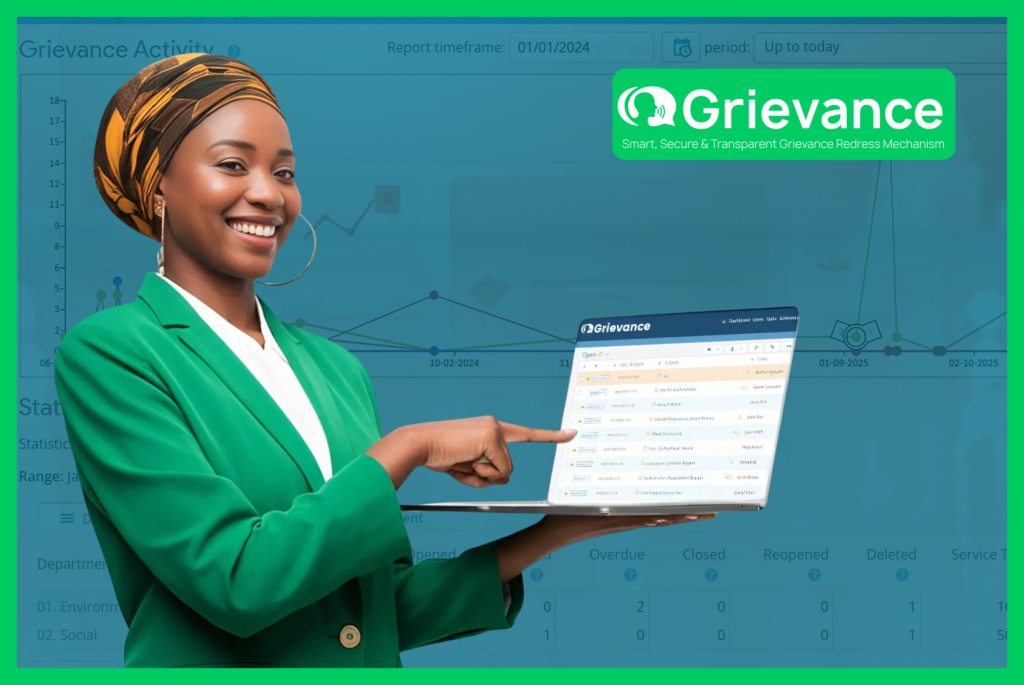Optimizing Grievance Management: 5 Critical Mistakes to Avoid

Grievance management (GRMs) are not just bureaucratic processes, they are a cornerstone of social accountability, organizational transparency, and stakeholder trust. When implemented effectively, they empower communities, reduce risks, and build long-term credibility. However, many companies, NGOs, and institutions continue to struggle with building and maintaining efficient systems.
The consequences of weak or dysfunctional GRMs are serious:
- Delays in processing grievances, leading to frustration and erosion of public confidence;
- Loss of credibility with affected individuals and communities;
- Exposure to legal and reputational risks that could have been avoided with proper oversight.
But why do these issues persist, even in well-meaning organizations?
Here are some of the root causes we frequently observe:
1. Reliance on Informal Mechanisms
Too often, grievance handling relies on ad hoc processes or verbal agreements rather than formal, documented protocols. This lack of standardization makes it difficult to ensure fairness, track progress, or learn from past cases.
2. Outdated Tools and Processes
Many organizations still depend on manual methods such as Excel spreadsheets, email threads, or even physical logbooks. These tools are prone to errors, lack transparency, and are difficult to scale.
3. Insufficient Stakeholder Involvement
A GRM designed without the input of the people it is meant to serve is likely to fail. Lack of consultation with community members, employees, or other stakeholders results in systems that are either irrelevant, inaccessible, or mistrusted.
In this article, we outline 5 common mistakes in grievance management and share practical solutions, including examples of best practices and tools like Grievance.app.
1. Neglecting to Establish a Structured Mechanism
Issue:
Without a clear framework, grievance management becomes chaotic, resulting in lost complaints, excessive delays, and an inability to analyze trends.
Consequences:
- Poor traceability: impossible to track request history.
- Unequal treatment: arbitrary prioritization of complaints.
Solutions:
- Structure the GRM in 4 steps: reception > registration > follow-up > closure.
- Digitize the process via a dedicated platform (e.g., Grievance.app) to ensure transparency and speed.
- Train teams on the protocols and tools used.
2. Underestimating Data Confidentiality and Security
Challenge:
Grievances often involve sensitive topics (harassment, corruption). Poor data management can:
- Deter reporting due to fear of leaks;
- Expose the organization to penalties (GDPR, local laws).
Best Practices:
- Anonymize complaints upon submission;
- Restrict data access to authorized personnel only.
- Encrypt communications and regularly audit system security.
3. Failing to Involve Stakeholders
Mistake:
A GRM developed without consulting communities or employees often ends up:
- Poorly suited to actual needs (languages, channels);
- Seldom used due to a lack of trust.
Recommendations:
- Organize workshops with beneficiaries to co-develop the mechanism.
- Multiply access channels: Web, mobile App, SMS, etc.
- Maintain continuous feedback to adjust the system.
4. Handling Grievances Too Slowly
Impact:
- Increased frustration from complainants;
- Risk of negative publicity (social media).
- Automate acknowledgment of receipt (instant notifications);
- Set strict deadlines: 24h for emergencies, 7 days max for standard complaints;
- Track key indicators: average resolution time, satisfaction rate.
5. Not Using Data for Continuous Improvement
Missed Opportunity:
A GRM generates valuable data to anticipate risks. However, many organizations:
- Fail to document resolved complaints;
- Forget to produce analytical reports.
Strategies:
- Generate monthly reports showing trends by region/project.
- Integrate insights into CSR risk management.
- Share results with stakeholders (evidence of transparency).
Conclusion: Turn Your Grievance Management into a Strategic Asset
Avoiding these 5 pitfalls allows you to:
- Strengthen trust among employees, clients, and communities;
- Comply with international standards (CSR, human rights);
- Identify risks before they become critical.
Take Action Now:
Discover Grievance.app, the platform that simplifies grievance management with:
- A secure and traceable system,
- Automated analytics for informed decision-making.
FAQ – Grievance Management
Q: What are the benefits of good grievance management?
A: Conflict prevention, CSR compliance, and continuous process improvement.
Q: How to choose grievance reporting channels?
A: Prioritize channels accessible to your audience (e.g., SMS in low-connectivity areas, web forms
for businesses.)
Q: What tools can help digitize a GRM?
A: Solutions like Grievance.app offer traceability, security, and reporting capabilities tailored to
NGOs and businesses
